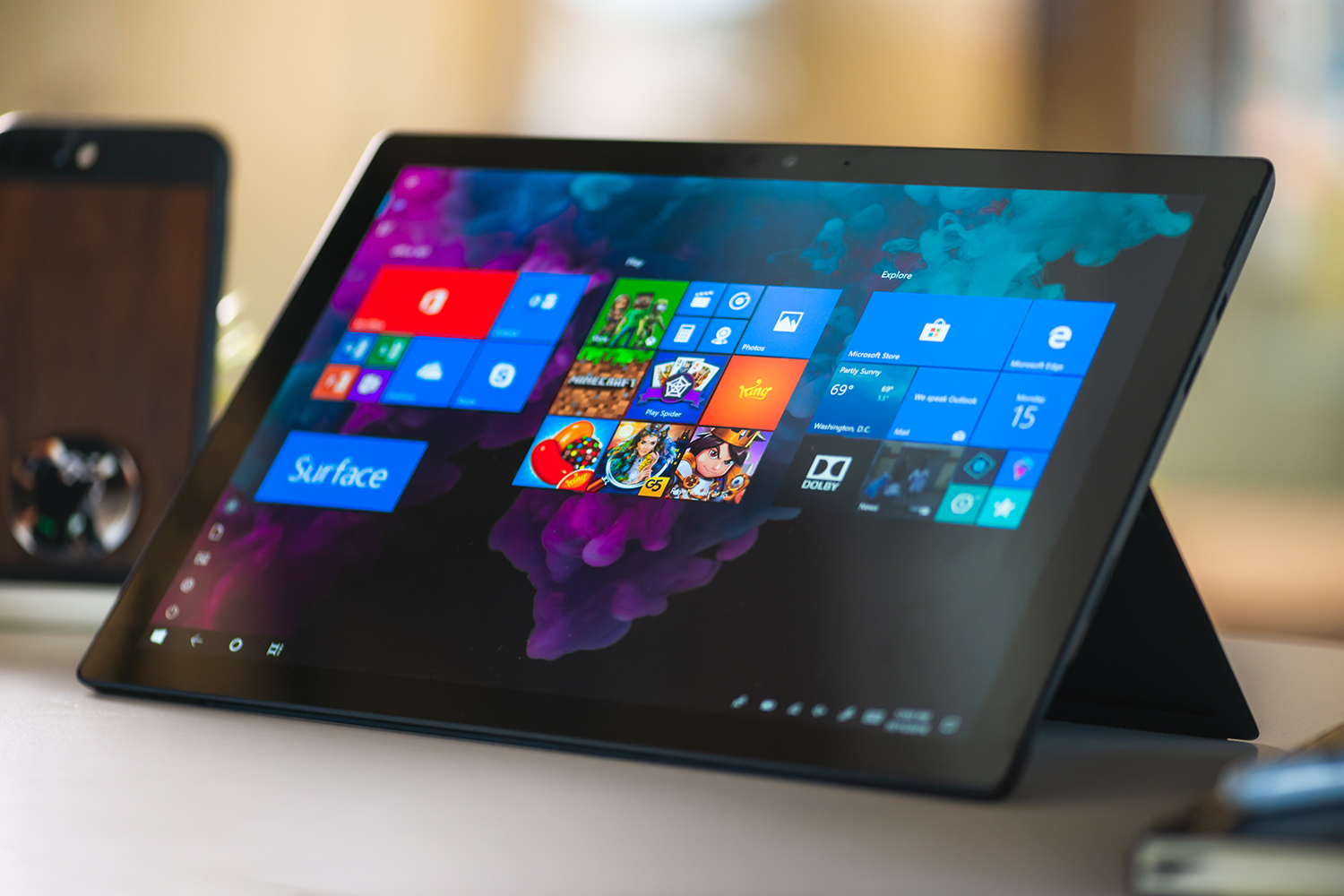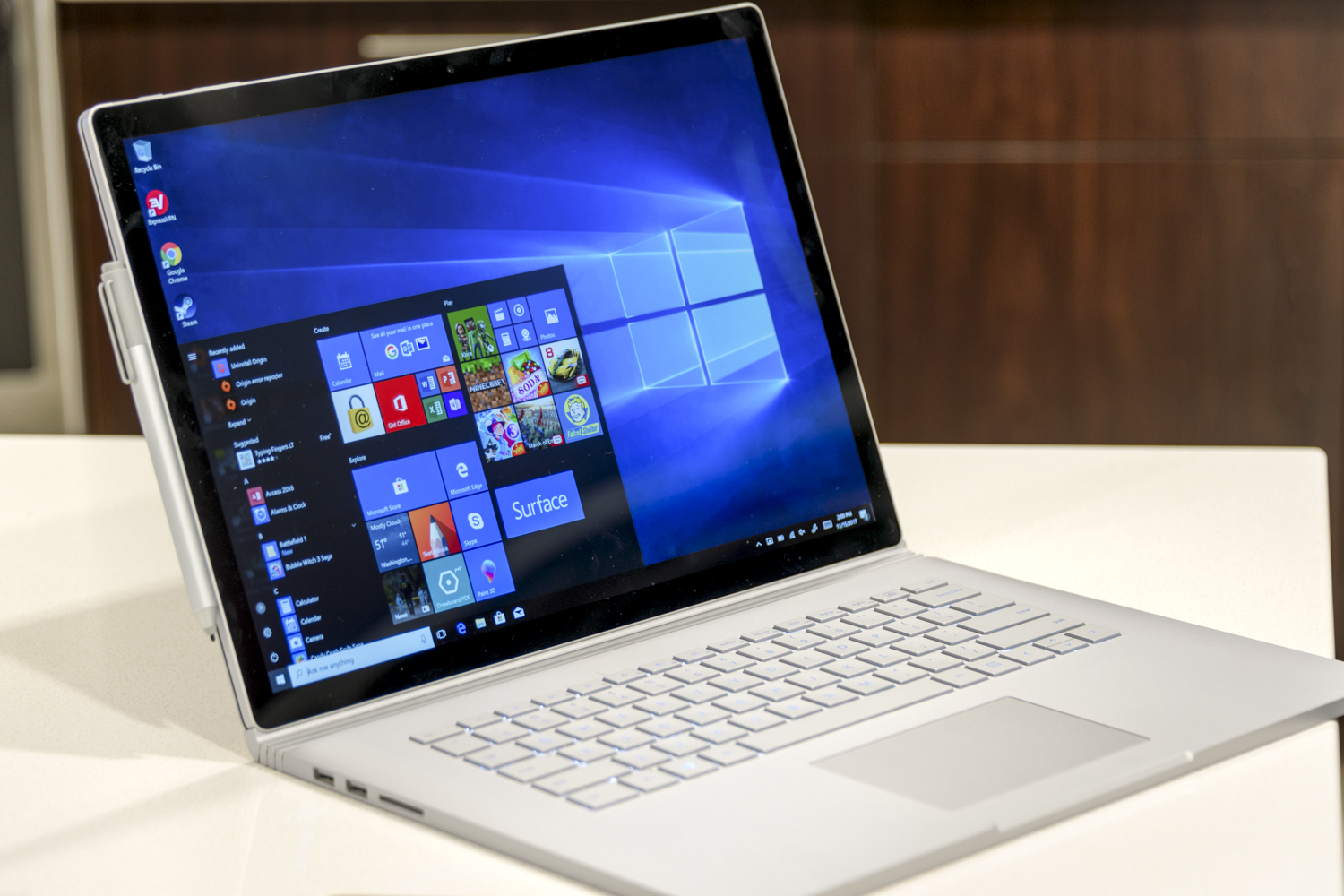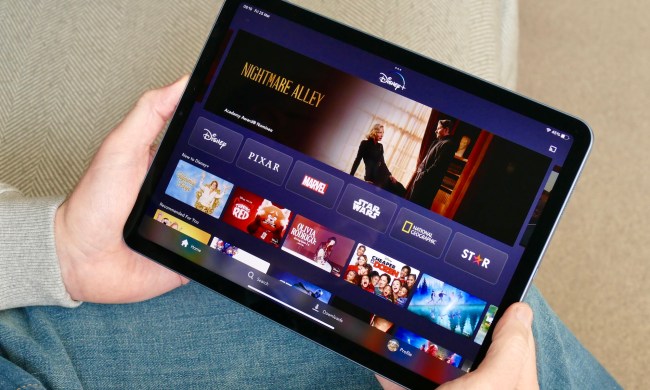Microsoft’s Surface products aren’t for everyone, but if you want a powerful 2-in-1 with great battery life, there aren’t many that can compare. However, when you look at the new and different entries within the Surface lineup, deciding what’s best for you can be difficult. To try to nail it down, we pitted the Surface Pro 7 versus the Surface Book 2 and compared them on design, performance, and portability.
For a look at some of our other favorite 2-in-1s, check out our buying guide.
Design

The Surface Pro 7 and the Surface Book 2 are detachable 2-in-1 PCs. That means their keyboards are separate devices from the main tablet design. The big difference between these two models is that the Surface Pro 7 is not bundled with the Type Cover whereas a keyboard — complete with a unique hinge — is included with the Surface Book 2.
Almost the entirety of Microsoft’s Surface product line exudes a cool professionalism that is hard to find outside of Apple’s MacBook Pro lineup, and the Surface Book 2 is easily the flagship device in that respect. It’s exceedingly sturdy, with a solid, magnesium frame that’s both lightweight and extremely durable. It feels solid, professional, and high-quality — although you would expect as such with its high price tag.
The Surface Pro 7 is an equally well-built device, though with its thinner keyboard it’s not as substantial or as domineering. But, since both devices have detachable keyboards, they are each incredibly light during tablet-mode, with the Surface Book 2 somehow coming in ever so slightly lighter despite its larger display.
The Surface Book 2 also has a similar range of ports to the Surface Pro 7. It sports a pair of USB-A ports, a USB-C port, a headphone jack, two Surface Connect ports, and a full-size SDXC card reader.
The Surface Pro 7, meanwhile, comes equipped with a USB-A port, a USB-C port, a headphone jack, a Surface connect port, and a micro-SDXC card reader. That’s a nice mix of connectivity, meaning you won’t need to use a dongle with either of the two devices.
Finally, the displays in both systems are excellent, each with identical pixel densities of 267 pixels per inch. The Book 2 has a larger screen at 13.5 inches with a 3000 x 2000 resolution. The Pro 7 is smaller at 12.3 inches and a 2736 x 1824 resolution.
Performance

Because the Surface Pro 7 is a newer device, you’ll see better overall performance just on the processor level alone. The Surface Book 2 relies on both 7th- and 8th-generation Intel Core processors while the Surface Pro 7 uses 10th-gen chips. Throwing up benchmark numbers seems pointless in this case, but we can at least compare the two Core i7 chips to give you an idea.
The i7-8650U chip in the Surface Book 2 scored 1076 in the single-core test while the i7-1065G7 chip in the Surface Pro 7 scored 1199. Meanwhile, the i7-8650U chip in the Book 2 scored 3350 in the multi-core test and the i7-1065G7 in the Pro 7 scored 4447. There’s a slight improvement over the 8th generation, but the real upgrade lies in the improved integrated GPU performance.
However, the Surface Book 2 has the advantage in terms of graphics. Intel’s 10th-gen integrated graphics can’t match the power of a discrete GPU. Nvidia’s GTX 1050 isn’t exactly a powerhouse, sure, but it’s better than having no discrete graphics whatsoever. This is ideal if you want to play Full HD games, edit video, or design your next house in AutoCAD.
For general computing, the Surface Pro 7 is easily the better machine in terms of price vs. performance. When you need extra graphics capabilities, however, the Surface Book 2 is miles ahead of its smaller sibling if you configure it with the dedicated graphics chip.
Portability

Both the Surface Pro 7 and Surface Book 2 are amazingly portable 2-in-1s, especially when in tablet mode.
The Surface Book 2 is the larger and heavier device, with the Core i5 configurations measuring 0.90 inches thick and weighing 3.38 pounds with the keyboard attached — the tablet portion alone is 0.51 inches. The Core i7 configuration — with the keyboard attached — is 0.90 inches thick and weighs 3.62 pounds. The tablet portion is thicker than the Core i5 versions at 0.59 inches.
The Surface Pro 7, on the other hand, is just 0.33 inches thick without the optional keyboard. The Core i3 and i5 configurations weigh 1.70 pounds versus the Core i7 configuration at 1.74 pounds. The Type cover adds another 0.20 inches and 0.68 pounds. This makes the Pro 7 the better option in regards to weight and size.
Where the Surface Pro 7 is a little easier to handle, it can’t match the Surface Book 2’s battery life. The Pro 7 offers eight and a half hours of battery life in our testing, but the Surface Book 2 managed 11 hours of web browsing and 17 hours for video playback in our testing.
One important caveat, though, is that the Surface Book 2 has two batteries — one in the keyboard and one in the tablet, the latter of which is smaller. That means tablet-only mode lasts only two to three hours.
The Surface Book 2 is better, but there’s a catch

The Surface Pro 7 starts at $675 with 4GB of RAM, 128GB of storage, and a tenth-generation Core i3-1005G1 dual-core processor. Upgrades include a quad-core Core i5-1035G4, or for $1,349 you can get a Core i7-1065G7 CPU with 256GB of storage. For $2,069 you can net yourself 16GB of RAM and a terabyte of SSD space.
The Surface Book 2 starts at $1,034 and comes with a seventh-generation Core i5-7300U CPU, 8GB of RAM, and a 256GB SSD. That’s a rather weak starting point compared to the Surface Pro 7, considering the 7300U is an older generation dual-core CPU. Most importantly though, with the Surface Book 2, you can get an Nvidia GTX 1050 discrete GPU.
However, the Surface Book 2 is out of stock through Microsoft given the company now focuses on the Surface Book 3. But you can still find the second-generation model at Best Buy and other retailers. Best Buy sells a configuration for $2,000 packing the 8th-gen Core i7-8650U, Nvidia’s GTX 1050, 8GB of RAM, and 256GB of storage. If you want to go larger, you find configurations of the 15-inch model as well.
Overall, picking a winner out of these two Surface 2-in-1s is difficult, as it’s a case of each being better at certain things. The Surface Pro 7 is more affordable and offers better hardware at that lower price point. But it’s not as sturdy, nor as capable graphically, nor as long-lasting as the Surface Book 2.
Even still, the Surface Pro 7 will be the better option for most people. The Surface Book 2 is the more capable piece of hardware, but it’s also more expensive and has outdated CPUs. If you want a dedicated GPU and killer battery life, it’s near-perfect. Most people don’t need that graphical might, which makes the Surface Pro 7 the better option.


